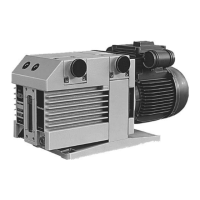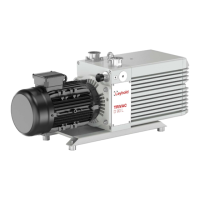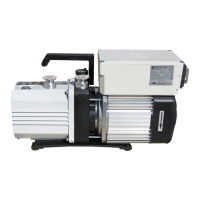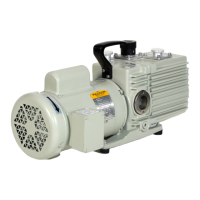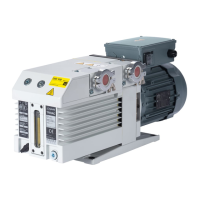Installation
20 GA01601_002_C1 - 03/2018 - © Leybold
3.2.1 Abnormal use
The TRIVAC D 2,5 E-LD is suited only for installation within housings
providing adequate touch protection. This pump must not be operated wit-
hout this additional touch protection.
The TRIVAC is not suited for pumping of:
n radioactive and toxic substances
n pyrophorous substances
n corrosive gases
n oxygen (or other highly reactive gases) at concentrations exceeding
that of the atmosphere (> 21 % for oxygen).
The pumps are not suited for pumping of liquids or media which carry
large quantities of dust. Corresponding protection devices need to be pro-
vided.
The standard pump is not suited for pumping of hazardous gases or
vapours.
When cleaning a system in which a TRIVAC pump has been integrated, all
parts in contact with the medium need to be compatible withthe cleaning
agent so as to prevent a chemical reaction. Residues of the cleaning agent
within the pump must be avoided.
3.3 Connection to the System
Before connecting the pump, the shipping seals on the connection flanges
(5/1 and 5/2) must be removed. If residues of adhesives are present on the
connecting flanges you must remove these using a suitable solvent like
alcohol, for example.
We recommend retaining of the shipping seals for use when wanting to
decommission the pump.
The intake line is fitted with standard small flanges. The connection flanges
must be clean and undamaged.
The intake line and the exhaust line must be connected using corrugated
pipes or vacuum hoses so that no mechanical forces can be transferred to
the pump.
The intake line must be clean. Any deposits in the intake line will tend to
degas and impair the attainable vacuum pressures.
The cross section of the intake and exhaust line must at least be of the same
diameter as that of the pump connections.
An intake line which is too small in diameter will throttle the pumping speed.
NOTICE
CAUTION
NOTICE
CAUTION
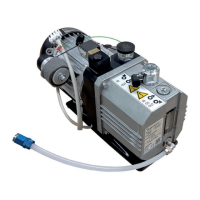
